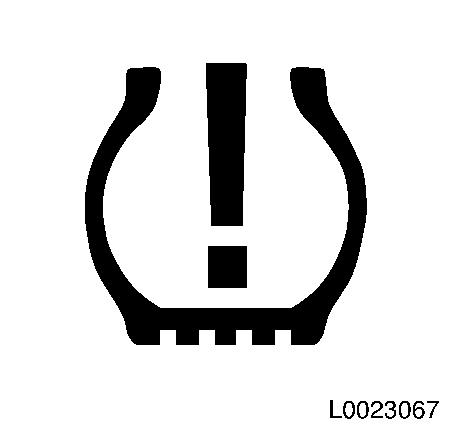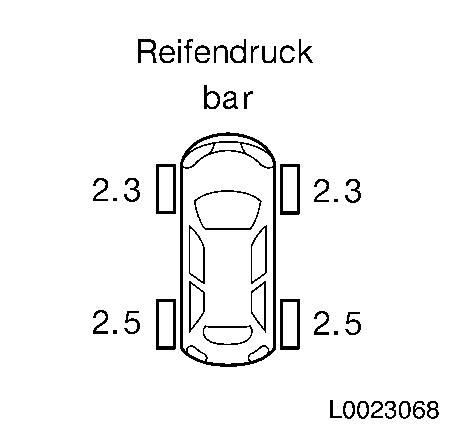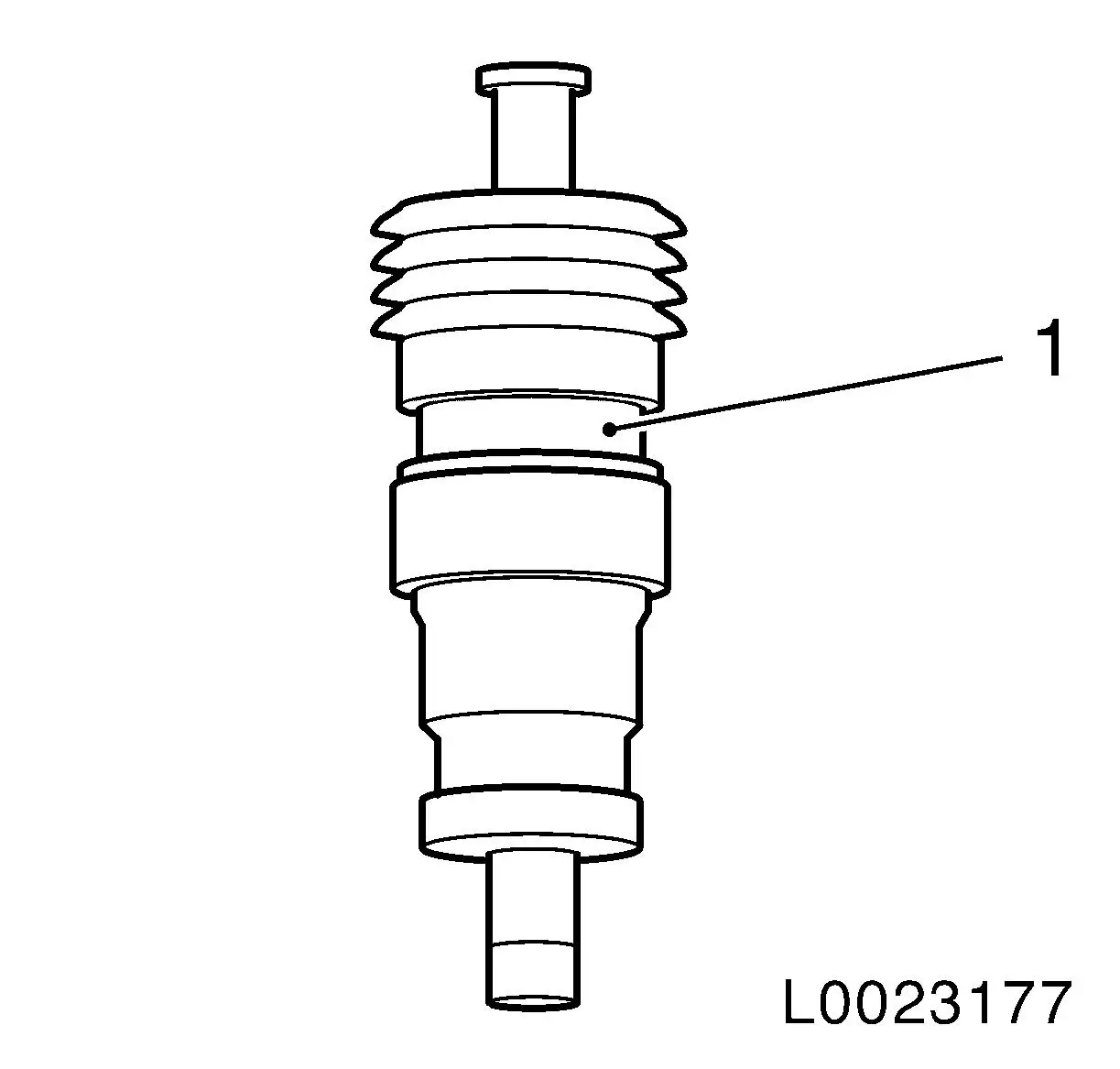Astra J
|
Tyre pressure monitoring system Corsa-D, Astra-H and Zafira-B with tyre pressure control system The tyre pressure monitoring system is a combination of direct and indirect measuring. Unlike the system in the Vectra-C / Signum it only has one receiver / control unit. For this reason the system has to be "taught" to recognise the positions of the tyres. Wheels that are removed as part of the pre-delivery inspection or because of defects during transport must be replaced in the same positions to avoid the need for a reset. The system "learns" as follows: Press the reset button for 4 seconds with the ignition ON or with the engine running and then drive approximately 10 min / 6 mls (10 km) (the driver, not the dealer!). During this time the system teaches itself. Note: The customer should be informed that during the first 10 minutes of driving the system can only provide limited information. It differentiates between the front and rear axles. In the event of tyre pressure loss the system then also differentiates between right and left. Note: The spare wheel is not fitted with a tyre sensor. When this wheel is used only the other three wheels are monitored. The monitor light for the replaced wheel glows. When a full set of wheels without tyre pressure sensors is used, there is no fault display. In this case the system is inoperative. In the event of a fault in the tyre pressure monitoring system the fault monitor light in the speedometer display lights up. General information on the tyre pressure monitoring system Whenever a tyre is changed the valve inserts and seal rings of the tyre pressure monitoring system must be replaced, observing the instructions for removal in the Service Instructions, Group E.
Antara with tyre pressure monitoring system The tyre pressure monitoring system (TPMS) is a direct measurement system in which pressure sensors in the rim (not in spare wheel) constantly monitor the tyre pressure during driving. After initialisation (which must be performed with tyres at the correct pressure) the system is fully functioning after around 10 minutes' driving at minimum 30 km/h, and distinguishes between front and rear axles. It only distinguishes between left and right wheels if a pressure loss has been found. Once a minute, the tyre pressures are transmitted to the TPMS control unit via a radio signal. There the values are compared with the standard tyre pressures and then sent to the instrument cluster via the ABS control unit on the CAN databus. The system automatically detects whether the vehicle contains up to 3 passengers or is fully loaded. On vehicles with graphic information displays (GID) or colour information displays (CID) and a trip computer, it is possible to read off the current tyre pressures from the information display. Since the system uses the standard tyre pressures as a reference, different pressure values may be shown for the front and rear tyres. If the system detects a difference in pressure in one or more tyres, a message is displayed in the information display along with details of the faulty tyre and the pressure difference (down to 0.1 bar). If there is a considerable difference in the pressure, a warning requesting immediate attention is also displayed. If a vehicle is fitted with TPMS, it will display the appropriate symbol in the information display. A non-replaceable battery supplies power to the sensors in the wheels. Important: In the event of a puncture, no liquid repair kits for tyres may be used, in order to avoid damaging the sensors. If a wheel or tyre has been changed, a tyre pressure sensor changed or the wheels swapped round, TPMS must be reprogrammed. To do this, use TECH2 and J-46079 Tyre pressure check system tester, or a suitable frequency emitter for the tyre pressure check system. For further information see the corresponding Test Instructions. When tightening the nuts on the tyre pressure sensor, observe the specified tightening torque to prevent damage to the sensor. Astra-J, Insignia with Tyre Pressure Monitoring System (TPMS) The TPMS (Tyre Pressure Monitoring System) consists of two electronics modules (RFA and ALM), four tyre pressure sensors, a special software application in the BCM, a check lamp (IPC) and a display (DIC) in the instrument panel. The system determines the tyre pressure and informs the driver of a possible pressure loss on one of the wheels. Working method: The tyre pressure sensors fitted to the wheels send radio messages at a frequency of 433 MHz which contain an identifier, information on the tyre pressure and temperature, and allow a conclusion on whether the wheel is on the left or right position on the axle (this is determined from the direction of rotation of the wheel). The RFA is used solely to receive the radio messages and pass these to the TPMS software application in the BCM. The ALM mounted in the rear of the vehicle determines the position of the wheel from the reception strength of the individual signals (identified by the identifier in the message) and the information on rotation direction, and also passes this information to the BCM. It can take up to 10 minutes of driving time to determine the position, e.g. after a wheel change. From the information received, the BCM determines the status of the system and whether a message has been sent to the driver via the check lamp (IPC) or display (DIC). Possible system messages are listed below.
Further TPMS equipment features in Astra-J, Insignia A feature by the name of "Adaptive Threshold" allows the system to detect automatically when the customer has intentionally increased the tyre pressure (such as before going on holiday with a heavily laden car). The nominal pressures and all warning thresholds are then adapted automatically to the higher value. If the tyre pressure is intentionally reduced again after this heavily laden journey, one ignition cycle must take place so that the system can reset the original nominal values. Note: the pressure must not be reduced with the ignition switched on. The "Auto Learn" feature permits automatic learning of the correct tyre pressure sensor position. If a sensor has previously been moved on the vehicle (tyre rotation), it is necessary to wait 20 minutes following a change of tyre/sensor or tyre exchange (e.g. from front to rear) until this sensor is again in repositioning mode. Therefore, once a sensor has been moving, it has to be at rest for 20 minutes until its position can be relearnt. The automatic learning of the TPMS sensors and their new position may take place over up to 10 minutes of driving at speeds in excess of 20 km/h. If lines appear in the display instead of the pressure values, this may indicate that the sensors are learning the new values. The "Temperature Compensation" feature could lead to confusion and should be explained to the customer. The display shows the raw tyre pressure value; that is, the tyre pressure that can be read off at the tyre using a pressure gauge. However, the pressure warnings relate to the temperature-compensated tyre pressures (reference temperature is 20°C). If the tyre is very hot, the raw value in the display may look correct. However, with temperature compensation to 20°C, the pressure will be a lot lower and could trigger the pressure warning. Conversely, when the tyres are very cold, the raw value in the display is lower than the temperature-compensated pressure (basis for the warning message). It is important for the customer to know that cold tyres allow the actual pressure in the tyre to drop, while hot tyres allow it to rise. The tyres also heat up while driving, so the pressure rises. Note: Always set the nominal tyre pressure (shown in the user manual or on the sticker on the driver's side B pillar) with the tyres as cold as possible. If the tyres are hot, set to approx. 0.2 bar (20 kPa) more. Note: Air machines at petrol stations often show more pressure in tyres than is actually the case. Therefore, use calibrated devices as far as possible.
|
||||||||||



